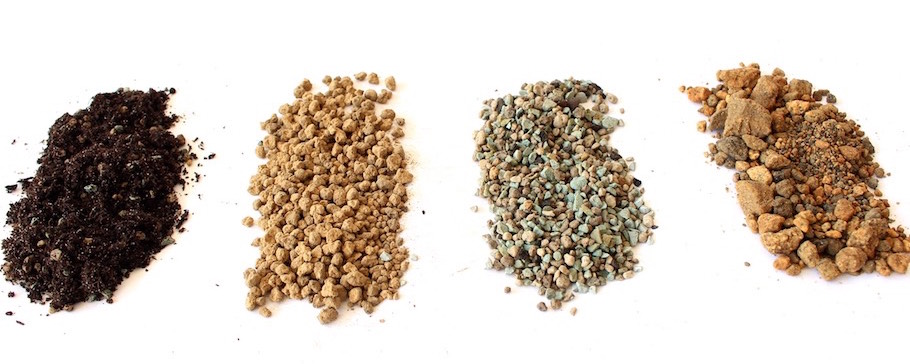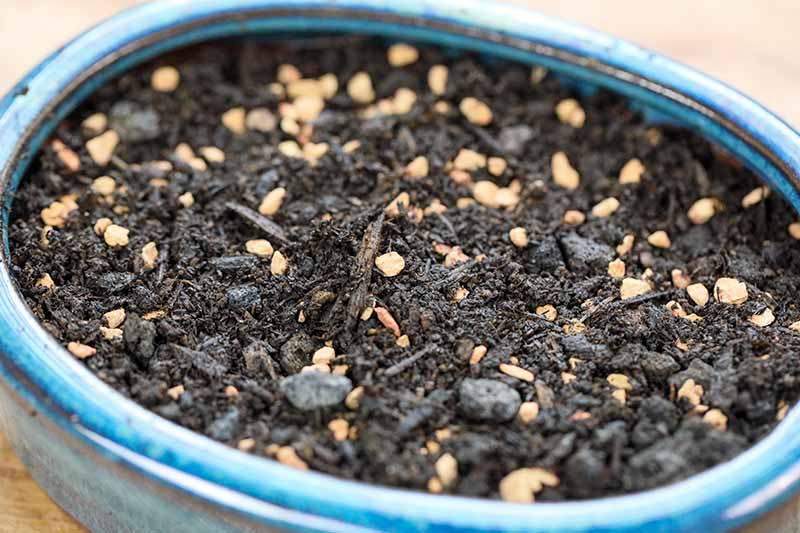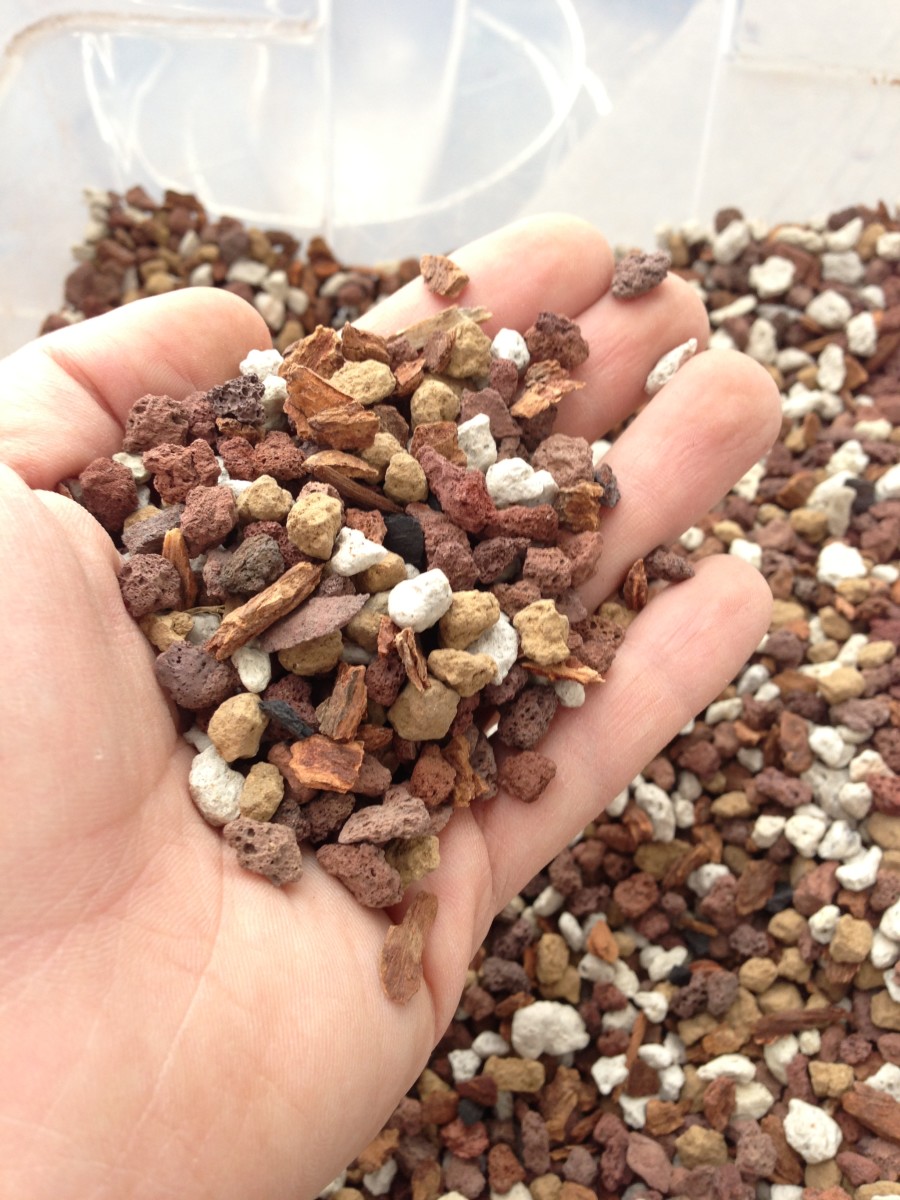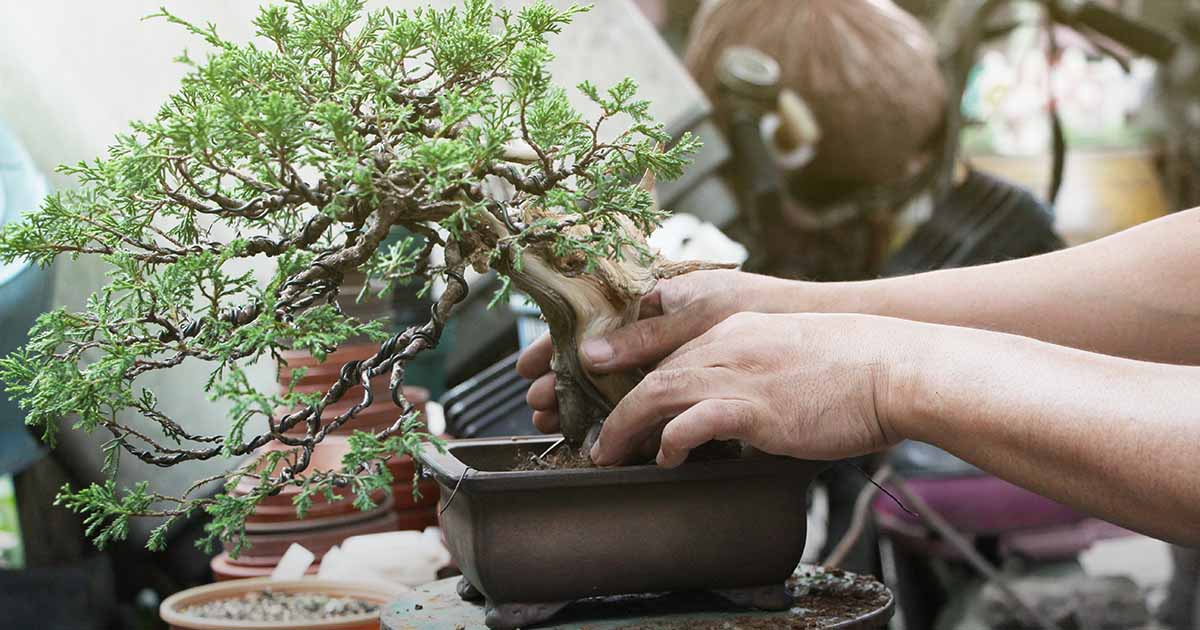In this post, we will explore the different sorts of soil and substrates Employed in bonsai cultivation, which include organic and inorganic selections.
We'll also discover advised soil mixtures for various bonsai species, for instance deciduous, coniferous, and indoor types. From akadama and pumice to moss and river sand, we'll dive into your fascinating globe of bonsai soil and make it easier to understand why It is really a vital Portion of cultivating these exquisite trees.

Bonsai soil
What is bonsai soil?
Bonsai soil is a specialized type of soil that is specifically formulated for growing and maintaining bonsai trees. Unlike regular garden soil, bonsai soil is well-draining and provides the necessary nutrients and moisture balance for the tree's root system. The composition of bonsai soil is carefully designed to meet the unique needs of bonsai trees, ensuring their health and longevity.
The importance of bonsai soil
The choice of soil plays a crucial role in the success of your bonsai tree. The right soil provides optimal drainage, allowing excess water to flow freely and preventing root rot. It also promotes a healthy and well-developed root system, which is essential for the overall health and growth of the tree. Bonsai soil retains moisture while allowing air to reach the roots, striking the perfect balance for the tree's needs. Choosing the right bonsai soil is essential for maintaining a healthy and thriving bonsai tree.
Bonsai substrates
What are bonsai substrates?
Bonsai substrates refer to the different materials that can be used to create the ideal soil composition for bonsai trees. These substrates are carefully chosen to meet the specific needs of different species of bonsai trees and to ensure proper water drainage and nutrient availability.
Different types of bonsai substrates
There are various types of bonsai substrates available, each with its own unique characteristics and benefits. Some common bonsai substrates include:
- Organic materials: These include ingredients such as bark, peat moss, and coconut coir. Organic substrates help retain moisture and provide essential nutrients to the bonsai tree.
- Inorganic supplies: These contain components like pumice, lava rock, and akadama. Inorganic substrates deliver exceptional drainage, ensuring that surplus h2o doesn't accumulate throughout the roots with the bonsai tree.
- Soil amendments: They're substances which have been extra to your soil combination to boost its Houses. Examples of soil amendments include perlite, vermiculite, and sand. They Increase the soil's aeration, water-holding capability, and nutrient availability.
By comprehension the differing types of bonsai substrates as well as their Homes, it is possible to find the most suitable a single for your personal bonsai tree's wants.
Organic and natural or Inorganic Soils
Organic and natural soils for bonsai
Natural soils for bonsai are made up of normal materials including bark, peat moss, coconut coir, and compost. These resources give a rich source of nutrients to the bonsai tree and endorse healthy root advancement. Organic and natural soils even have superior h2o retention properties, ensuring which the tree gets sufficient humidity amongst watering periods. Having said that, it is vital to note that organic soils may stop working after some time and become compacted, resulting in poor drainage and prospective root troubles.
Inorganic soils for bonsai
Inorganic soils for bonsai include materials like pumice, lava rock, akadama, and soil amendments like perlite or vermiculite. These components have exceptional drainage Houses, protecting against waterlogged soil and advertising and marketing aeration around the roots. Inorganic soils are preferred by many bonsai fans because of their longevity and talent to supply a steady surroundings for your bonsai tree's root method. Nevertheless, they may involve additional Repeated watering and additional fertilization, as they don't keep as much moisture or nutrients as natural and organic soils.
Benefits and drawbacks of utilizing natural and organic and inorganic soils for bonsai
Picking out involving organic and natural and inorganic soils on your bonsai tree is dependent upon different factors, such as the certain species of tree, your climate, and private Choices. Listed below are the pros and cons of each and every:
Natural soils:
- Pros: Present nutrients, good water retention, endorse nutritious root advancement.
- Cons: May well break down eventually, probable for inadequate drainage Otherwise effectively managed.
Inorganic soils:
- Professionals: Excellent drainage, prolonged-lasting, steady environment for roots.
- Negatives: Much less h2o retention, could involve far more Recurrent watering and fertilization.
By thinking of the advantages and disadvantages of both natural and inorganic soils, you can also make an knowledgeable decision determined by the precise requirements of your respective bonsai tree.
Soil parts
Vital parts of bonsai soil
Bonsai soil is often composed of three major components: grit, organic and natural matter, and clay. These parts get the job done jointly to make The best soil composition with the bonsai tree's root method.
- Grit: Grit, which include sand or perlite, delivers drainage and aeration inside the soil. It can help prevent waterlogging and enables air to get to the roots.
- Natural subject: Natural and organic make a difference, like compost or bark, supplies nutrients on the bonsai tree. In addition, it aids keep moisture and Increase the soil's In general structure.
- Clay: Clay particles provide some water retention features and enable bind the soil jointly. On the other hand, too much clay can cause inadequate drainage and compaction.
Purpose of each soil component
Each and every soil component performs a significant part in making a nicely-balanced and healthful ecosystem for your bonsai tree's roots.
- Grit: Grit gives the necessary drainage and aeration from the soil. It stops the roots from sitting down in stagnant drinking water, lessening the chance of root rot and endorsing General root wellness.
- Natural and organic make any difference: Natural matter presents vital nutrients to the bonsai tree. It aids in dampness retention and contributes to the overall construction of your soil.
- Clay: Clay particles enable bind the soil alongside one another and supply some h2o retention capability. Having said that, it's important to balance the level of clay to prevent troubles like weak drainage and compaction.
By understanding the roles of every soil part, you could produce a well balanced bonsai soil combine that meets the particular requires of your tree.

Recommended Bonsai soil mixtures
Common bonsai soil mixtures
There are several common bonsai soil mixtures that have been proven effective for various types of bonsai trees. These mixtures typically consist of a combination of inorganic substrates, organic matter, and soil amendments.
Some of the commonly used bonsai soil mixtures include:
- Akadama, pumice, and lava rock: This mixture is popular among bonsai enthusiasts for its excellent drainage and water retention properties.
- Akadama, lava rock, and natural subject: This combination brings together the key benefits of inorganic substrates with the nutrient-wealthy Qualities of natural and organic issue.
- Pumice, perlite, and bark: This combination gives superior drainage and aeration while retaining some humidity and supplying nutrients.
These are generally just some examples of bonsai soil mixtures, and The best combination will depend upon the particular desires of your bonsai tree plus your local climate.
Elements to take into consideration when choosing a bonsai soil mixture
When deciding upon a bonsai soil combination, it's important to take into account the subsequent aspects:
- Species of bonsai tree: Unique species have various dampness and nutrient needs. Analysis the precise demands of one's tree to pick out a soil mixture that fulfills its prerequisites.
- Weather: The weather you live in can have an impact on the moisture retention Houses in the soil. Evaluate the common humidity and temperature in your neighborhood when choosing a soil mixture.
- Watering behaviors: Your personal watering behavior and regime ought to align While using the soil mixture you select. Some mixtures have to have more Regular watering, while some keep humidity for lengthier intervals.
- Finances: Some soil factors might be more expensive than Other folks. Take into consideration your spending budget when picking a soil combination.
By getting these components under consideration, you are able to pick a bonsai soil combination that gives the ideal escalating circumstances to your tree.
Deciduous Bonsai soil
Ideal soil composition for deciduous bonsai
Deciduous bonsai trees, for instance maple or birch, have unique soil specifications to help their progress and overall health. The ideal soil composition for deciduous bonsai usually includes a mixture of natural issue, inorganic substrates, and soil amendments.
A advisable soil composition for deciduous bonsai may well include things like:
- Akadama: Delivers fantastic h2o retention when letting for drainage. It also releases nutrients gradually as time passes.
- Pumice: Promotes aeration and drainage in the soil, preventing waterlogging.
- Bark or peat moss: Provides natural and organic subject on the soil, delivering nutrients and dampness retention.
This soil composition ensures that the roots of deciduous bonsai trees acquire the ideal harmony of dampness, nutrients, and oxygen for optimum growth.

Coniferous and Pine soil
Ideal soil mixture for coniferous and pine bonsai
Coniferous and pine bonsai trees have specific soil requirements due to their water retention needs and preference for acidic soil. An ideal soil mixture for coniferous and pine bonsai should provide good drainage while retaining moisture and maintaining the desired pH level.
A recommended soil mixture for coniferous and pine bonsai may include:
- Akadama: Provides excellent water retention while allowing for sufficient drainage. It releases nutrients slowly over time.
- Pumice: Encourages aeration and drainage from the soil, avoiding waterlogged roots.
- Peat moss: Adds organic make any difference and acidity to your soil, generating a perfect pH level for coniferous and pine trees.
This soil combination ensures that the roots of coniferous and pine bonsai trees acquire the appropriate stability of moisture, nutrients, and acidity for his or her precise demands.
Akadama
What exactly is akadama?
Akadama is really a variety of clay soil that is definitely broadly used in bonsai cultivation. It is actually recognized for its superb h2o retention Homes, which make sure a steady source of moisture into the bonsai tree's roots. Akadama is likewise prized for its power to launch nutrients slowly but surely after some time, providing a regular supply of nourishment for your tree.
Great things about working with akadama in bonsai soil
Utilizing akadama in bonsai soil offers various Advantages:
- H2o retention: Akadama has Excellent h2o retention Qualities, allowing it to hold humidity with no turning into waterlogged. This makes sure that the bonsai tree's roots receive a continual provide of water, selling healthful expansion.
- Nutrient release: Akadama slowly releases nutrients into your soil with time, offering a dependable source of nourishment for that bonsai tree. This minimizes the necessity for Recurrent fertilization and aids retain a balanced nutrient profile.
- Aeration: Even with its water retention abilities, akadama also presents suitable aeration into the bonsai tree's roots. It enables air to get to the root procedure, stopping issues for instance root rot as a result of insufficient oxygen.
By incorporating akadama into your bonsai soil, it is possible to make an exceptional growing surroundings on your tree, guaranteeing its wellbeing and vitality.

Lava rock
How lava rock benefits bonsai soil
Lava rock is a popular component in here bonsai soil mixtures due to its excellent drainage and aeration properties. It is typically used in conjunction with other substrates to create the ideal soil composition for bonsai trees.
The benefits of lava rock in bonsai soil include:
- Drainage: Lava rock provides excellent drainage, preventing waterlogging and ensuring that excess water flows freely through the soil. This helps prevent root rot and provides a healthy environment for the roots to thrive.
- Aeration: The porous nature of lava rock allows air to flow into throughout the soil, offering oxygen on the bonsai tree's root procedure. Good aeration is vital for healthful root progress and overall tree expansion.
- Longevity: Lava rock is a durable material that does not stop working quickly. This makes certain that the soil composition remains stable after a while, minimizing the need for Repeated soil replacements.
Lava rock is accessible in several dimensions and shapes, allowing for for personalization according to the precise requires of one's bonsai tree and soil necessities.
Differing types of lava rock
There are read more actually differing kinds of lava rock that could be used in bonsai soil mixtures, like:
- Black lava rock: Black lava rock is actually a frequently used content in bonsai soil mixtures. It offers outstanding drainage properties and provides an aesthetic aspect to the general presentation on the bonsai tree.
- Crimson lava rock: Red lava rock is an additional popular preference in bonsai soil mixtures. It provides related drainage and aeration Rewards as black lava rock but has a distinct reddish coloration that adds visual desire into the container.
Both black and crimson lava rocks are extensively available and can be quickly included into your bonsai soil combination.
Potting
Crucial guidelines for profitable bonsai potting
Potting is usually a vital procedure in bonsai cultivation, mainly because it straight impacts the health and development of your tree's roots. Here are several crucial tips for thriving bonsai potting:
- Choose the ideal pot dimension: Pick a bonsai pot which allows for root advancement although nonetheless supplying a cosy match. Steer clear of pots which might be much too large, as they can cause extreme soil moisture and lousy root enhancement.
- Use bonsai wire: Safe the tree within the pot utilizing bonsai wire to be certain stability. This helps prevent the tree from shifting or becoming uprooted all through watering or sturdy winds.
- Trim and unfold the roots: Before potting the bonsai tree, thoroughly trim and unfold out the roots. This encourages outward development and prevents root tangling or root-bound problems.
- Include mesh screens: Location mesh screens over the drainage holes at The underside of your pot to prevent soil erosion and ensure proper drainage.
- Use refreshing bonsai soil: When potting, constantly use contemporary bonsai soil to offer the mandatory nutrients and optimum expanding circumstances for the roots.
By following these critical guidelines, you can make certain An effective potting system and endorse the general health and development of one's bonsai tree.
The position of bonsai pots in soil humidity Command
Bonsai pots Perform a vital role in soil moisture control, specifically impacting the well being and expansion with the tree. Bonsai pots are generally shallow and have drainage holes, letting extra drinking water to flee and blocking the soil from turning out to be waterlogged.
The look of bonsai pots promotes evaporation and air circulation, which assists regulate soil humidity amounts. The shallow depth and huge opening of your pot expose additional surface region of the soil towards the air, aiding in humidity evaporation. This prevents the roots from sitting down in excessively damp soil, decreasing the chance of root rot along with other drinking water-similar issues.
On top of that, the drainage holes in bonsai pots let any extra drinking water to flee, stopping waterlogged soil and advertising and marketing aeration round the roots. Appropriate aeration is important for the well being and growth of the foundation technique, ensuring the bonsai tree receives the required oxygen for expansion.
By making use of bonsai pots created for efficient dampness Management, you may make a favorable setting to your bonsai tree's roots and encourage its All round overall health and vitality.
In summary, selecting the right bonsai soil is important to the good results and well being of your bonsai tree. Knowledge the different sorts of bonsai substrates, the role of organic and inorganic soils, The important thing factors of bonsai soil, and the assorted suggested soil mixtures will help you deliver the exceptional growing problems on your bonsai tree. Regardless of whether you have a deciduous or coniferous bonsai, incorporating resources like akadama and lava rock can greatly enhance the soil's drainage and nutrient availability. Moreover, listening to potting tactics and making use of bonsai pots created for dampness Management will additional help the thriving expansion of the bonsai tree. With correct comprehension and implementation of bonsai soil procedures, it is possible to benefit from the elegance and artistry of bonsai cultivation For some time to come back.
